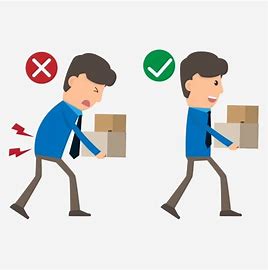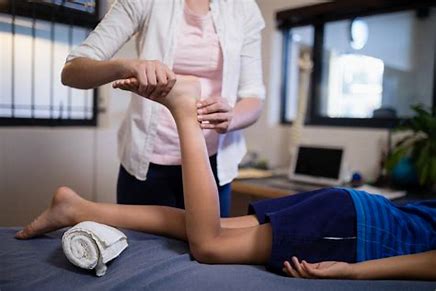Physiotherapists
1. Most Common Work-Related Pain Areas for Physiotherapists
- Lower Back Pain (Most frequent) – Due to bending, lifting, and manual therapy.
- Neck & Shoulder Pain – From prolonged standing, looking down, or manual techniques.
- Wrist & Hand Pain (e.g., De Quervain’s tenosynovitis, thumb arthritis) – From repetitive gripping, mobilizations, or soft tissue work.
- Elbow Pain (e.g., lateral epicondylitis – “PT’s elbow”) – From overuse in manual resistance or mobilizations.
- Knee & Hip Pain – From prolonged standing or awkward postures during treatments.
...............................................................................................................................................
2. Main Causes & Risk Factors
- Manual Therapy Overuse: Repetitive joint mobilizations, deep tissue massage, or trigger point release.
- Poor Body Mechanics:
· Bending at the waist instead of hips/squatting.
· Twisting while lifting or treating patients.
· Standing in one position for too long.
- Improper Treatment Table Height: Too low or too high, forcing awkward postures.
- Lack of Breaks: Continuous treatments without stretching or rest.
- Patient Handling: Transferring or assisting heavy/immobile patients.
- Stress & Fatigue: Leading to muscle tension and poor posture.


........................................................................................................................................................................
3. Prevention & Management Strategies
A. Ergonomic Adjustments
· Adjust Treatment Tables to elbow height when standing.
· Use Assistive Devices (e.g., stools, adjustable beds, hoists for patient transfers). Supportive Shoes (e.g., orthopedic or cushioned footwear for long standing hours).
B. Proper Body Mechanics
· Bend at Knees/Hips (not the back) when lifting or working low.
· Keep Patient Close to avoid overreaching.
§ -Alternate Hands during mobilizations to avoid unilateral overuse.
· Use Larger Muscle Groups (e.g., legs/core) instead of small hand/wrist muscles.
C. Exercise & Self-Care
· Strengthen Core & Postural Muscles (e.g., Pilates, yoga, resistance training).
· -Stretch Regularly (especially chest, neck, wrists, and hamstrings).
· Self-Massage & Foam Rolling for tight muscles (e.g., traps, forearms).
. Ice/Heat Therapy for acute flare-ups.
D. Work Modifications
· -Rotate Techniques (e.g., alternate between manual therapy, exercise, and electrotherapy).
· Limit High-Risk Techniques (e.g., minimize deep pressure if experiencing wrist pain).
· -Take Micro-Breaks (e.g., 30 sec stretch every 30 mins).
· -Use Tools (e.g., massage guns, straps, or mobilization devices to reduce hand strain).
E. Seek Professional Help if Needed
· Physiotherapy for Yourself (e.g., seeing a colleague for MSK pain).
· Ergonomic Assessment at the workplace.
· Consider Acupuncture/Dry Needling for chronic pain.
..........................................................................................................................................................................
4. Long-Term Solutions
• Advocate for Safe Workloads (avoid excessive patient numbers per day).
• Use Technology (e.g., telehealth for non-manual consults).
• Educate New PTs on injury prevention early in their careers.